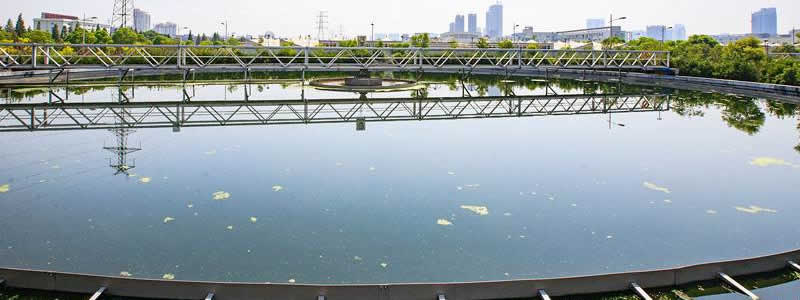
Why does the polyaluminum chloride coagulating agent not sink or float?
The coagulation treatment process of water and wastewater includes three stages: mixing and reaction of water and chemicals, and separation of flocs and water. The clarification tank is the specialized equipment to complete the above three processes. The quality of the polyaluminum chloride directly affects the treatment effect of the clarification tank water quality. Therefore, choosing a suitable water purification agent (polyaluminum chloride) is very important.
The medium that plays the role of intercepting and separating impurity particles in the clarifier is suspended sludge. In the clarification tank, the sedimented mud is lifted up and placed in a uniformly distributed suspended state, forming a high-concentration stable active sludge layer in the tank, the concentration of which is about 3-10g/L. The raw water flows from bottom to top in the clarifier, and the sludge layer can be in a dynamic equilibrium state in the rising water flow due to gravity. When the raw water passes through the activated sludge layer, using the principle of contact flocculation, the suspended solids in the raw water are blocked by the activated sludge slag layer and the water is clarified. The clean water is collected in the upper part of the clarifier. The rising velocity of the sludge suspension layer is related to the volume and concentration of the sludge. Therefore, the correct selection of the rising velocity and maintaining a good sludge suspension layer are the basic conditions for a better treatment effect in the clarifier.
At present, the clarification tanks commonly used in wastewater treatment are: mechanically accelerated clarification tanks, hydraulic circulation clarification tanks, suspension clarification tanks, and pulse clarification tanks.
There are many reasons for the floating of alum in the clarifier. It will directly affect the quality of the effluent, so attention should be paid. The manufacturer has summarized the following points where a large amount of alum blooms in the clarification tank:
1. The speed of the mixer in the clarifier is too fast to break up the alum blooms, and it is more difficult for the broken alum blooms to agglomerate again, causing the strength of the sludge to decrease and the alum blooms to float. When encountering this kind of situation, it is necessary to control the alignment of the outer edge of the mixer impeller and not exceed the design regulations. And appropriately increase the amount of coagulant to form a suspended sludge layer again.
2. The backflow of the clarification tank is blocked, the active mud cannot flow back, and the alum blooms float up along the wall of the tank. At this time, open the backflow joint to flush the pipeline, clear the blockage, properly carry out the central drainage, and increase the flow rate of the mixer to 4~5 times of the outlet water volume, so as to avoid the phenomenon of floating.
3. Sludge is not discharged regularly in time, or the height of the sludge layer fluctuates greatly. It is classified that the sludge layer is too high, causing the alum blooms to float up. At this time, the sludge should be discharged in time, and the height of the sludge layer should be adjusted or controlled.
4. Small addition of coagulant makes it difficult to form alum blooms, poor coagulation effect, and the suspended solids cannot be separated and settled; or if the addition of coagulant is too large, counter-ion phenomenon occurs, which is difficult to agglomerate, and it will also cause alum blooms to float up.
5. The water temperature changes suddenly, and the water flow is disturbed as a result, and the mud layer floats up. At this time, you can appropriately reduce the stirring speed, appropriately increase the amount of coagulant, and adjust the amount of water to stabilize the water flow. If possible, the activated mud or slime can be properly withdrawn.
6. If it is a clarification tank with lime slurry, CaCO3 colloid will be formed due to the excessive increase, which makes the alum flower large in volume and small in density and easy to float. However, if the dosage is too small, the CaCO3 produced will be small, the volume of the alum is small, and the strength of the sludge layer in the upper part of the reaction zone will decrease and rise. At this time, the mixer speed should be adjusted appropriately, and the alkalinity should be controlled stably, and coagulant should be appropriately increased dose.
For more details and technical informations on specific chemicals you are interested in...
Contact us to serve you today!
 Previous
Previous  Next
Next Get answers and advice from people you want it from.